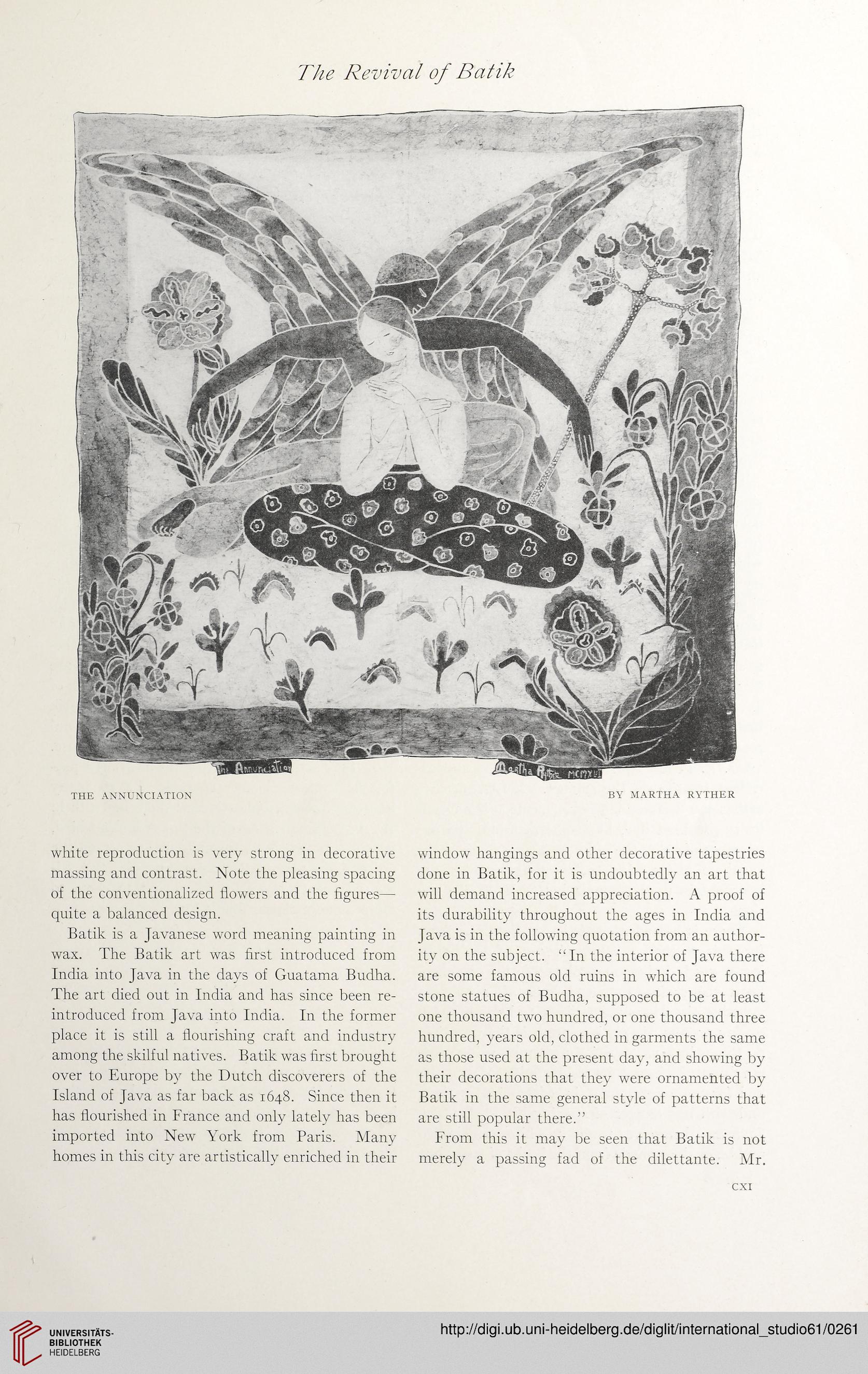The Revival of Batik
THE ANNUNCIATION
BY MARTHA RYTHER
white reproduction is very strong in decorative
massing and contrast. Note the pleasing spacing
of the conventionalized flowers and the figures—■
quite a balanced design.
Batik is a Javanese word meaning painting in
wax. The Batik art was first introduced from
India into Java in the days of Guatama Budha.
The art died out in India and has since been re-
introduced from Java into India. In the former
place it is still a flourishing craft and industry
among the skilful natives. Batik was first brought
over to Europe by the Dutch discoverers of the
Island of Java as far back as 1648. Since then it
has flourished in France and only lately has been
imported into New York from Paris. Many
homes in this city are artistically enriched in their
window hangings and other decorative tapestries
done in Batik, for it is undoubtedly an art that
will demand increased appreciation. A proof of
its durability throughout the ages in India and
Java is in the following quotation from an author-
ity on the subject. “In the interior of Java there
are some famous old ruins in which are found
stone statues of Budha, supposed to be at least
one thousand two hundred, or one thousand three
hundred, years old, clothed in garments the same
as those used at the present day, and showing by
their decorations that they were ornamented by
Batik in the same general style of patterns that
are still popular there.”
From this it may be seen that Batik is not
merely a passing fad of the dilettante. Mr.
CXI
THE ANNUNCIATION
BY MARTHA RYTHER
white reproduction is very strong in decorative
massing and contrast. Note the pleasing spacing
of the conventionalized flowers and the figures—■
quite a balanced design.
Batik is a Javanese word meaning painting in
wax. The Batik art was first introduced from
India into Java in the days of Guatama Budha.
The art died out in India and has since been re-
introduced from Java into India. In the former
place it is still a flourishing craft and industry
among the skilful natives. Batik was first brought
over to Europe by the Dutch discoverers of the
Island of Java as far back as 1648. Since then it
has flourished in France and only lately has been
imported into New York from Paris. Many
homes in this city are artistically enriched in their
window hangings and other decorative tapestries
done in Batik, for it is undoubtedly an art that
will demand increased appreciation. A proof of
its durability throughout the ages in India and
Java is in the following quotation from an author-
ity on the subject. “In the interior of Java there
are some famous old ruins in which are found
stone statues of Budha, supposed to be at least
one thousand two hundred, or one thousand three
hundred, years old, clothed in garments the same
as those used at the present day, and showing by
their decorations that they were ornamented by
Batik in the same general style of patterns that
are still popular there.”
From this it may be seen that Batik is not
merely a passing fad of the dilettante. Mr.
CXI




